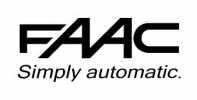Automated Gate Safety Standards: Responsibilities for Manufacturer & Installer
For manufacturers and installers of automated gates, there are stringent regulations that must be adhered to in order to ensure the total safety of the gate and those who use it. If these rules are not followed, then the installer and manufacturer are can be held liable for any faults that may occur with the gate.
This article will look into the automated gate safety standards and the numerous responsibilities that installers and manufacturers have when creating and fitting automated gates.
Responsibility of the Manufacturer & Installer
The Machinery Directive is the legislation that all new powered gate installations must adhere to. This Directive includes its own Essential Health and Safety Requirements, and the responsibility to follow these requirements lies solely with the installer. This includes:
- When the installer has manufactured the gate, drive unit, and controller
- When the installer has manufactured the gate, but another manufacturer has made the controllers and drive units
- When the installer has purchased the gate, controllers and drive units from another manufacturer
When a complete gate is placed on the market, the person selling the gate bears responsibility for following the Machinery Directive. In terms of the installation, the responsibility to adhere to the Health and Safety at Work Act 1974 lies with the installer.
Declaration of Conformity
This document must contain the following information:
- Name and address of the responsible person
- Description and identification of the machinery
- Confirmation that the machinery adheres to the Machinery Directive 2006/42/EC
- Reference to any harmonised standards that are used
- References to all technical standards and specifications
- Signature, date and location of the declaration
CE Marking
These letters must be fixed permanently to the machine, along with the name of the responsible person.
Risk Assessment
What is a risk assessment?
A risk assessment is a legal requirement that is designed to ensure the risks concerning machinery are fully evaluated. The process should be carried out regularly, and any risks should be eliminated or reduced where necessary.
How does it work?
1 – The limits of the machinery
In order to properly test the limits of the machinery, the realistic use and potential misuse of the machinery must be replicated, to determine what the machinery can withstand. Limits can be placed on use, depending on who is likely to use the gate and their level of knowledge of the system, as well as spatial requirements and the lifespan of components.
2 – Hazard identification
The hazards that are looked for are ones that may realistically occur during the gate’s lifespan, which includes the commissioning, usage, repair and dismantling of the gate.
3 -Risk estimation
The level of risk is determined by the severity of any potential injury, coupled with how likely it is that injury will occur at all. There are a number of mitigating factors, such as how many people will interact with the machinery and what, if any safety precautions are taken to prevent injury.
Servicing, maintenance and repair of automated gates
Servicing, maintenance and repairs are necessary to ensure the longevity and safety of automated gates. If the company or responsible person who owns the gate refuses safety upgrades, then the installer should keep written record of the fact that these upgrades were declined.
Any steps that are taken to maintain, repair or upgrade the system should be in line with health and safety legislation, and they should be carried out by the installer or a registered engineer to ensure the gate is safe to be used.
If you would like to know more about our automated gate services, please feel free to get in touch with the friendly team at Strand Systems today and we will be more than happy to help you with anything you need.







